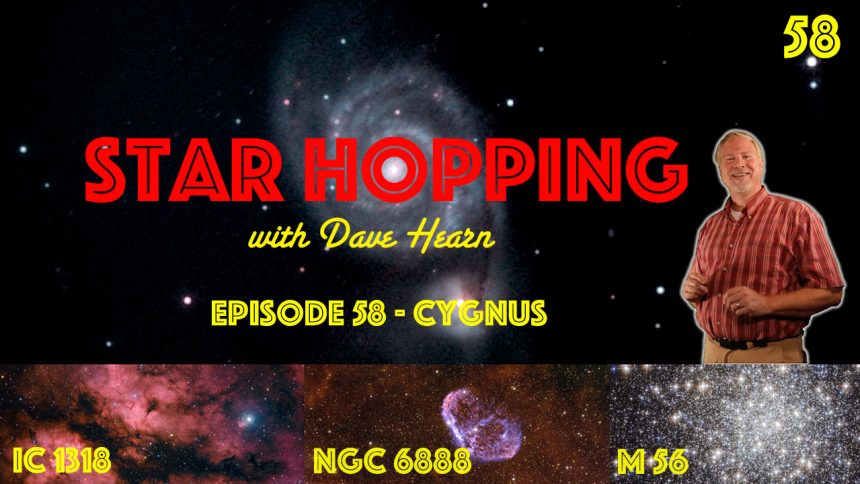In Episode SH058 of Star Hopping…
we’ll examine the Cygnus region, and we’ll locate three great deep sky objects; two nebulae and one globular cluster. We’ll start out locating the Gamma Cygni Nebula: a huge 3 degree wide emission nebula surrounding the bright star Sadr. Close by we’ll also find NGC 6888, the Crescent Nebula. Finally across the border in Lyra, we’ll locate Messier 56, one of the faintest globulars on the Messier list.
Intro
Well I was outside last night at the observatory, after a good imaging session, and I was treated with an excellent view of the Milky Way rising out of the south, and arcing the whole way into the northeastern sky, It finally disappeared just past Cygnus the Swan. I could even see the Great Rift of Cygnus. There are just a ton of great objects in the constellation of Cygnus, since the Milky Way does indeed pass right through it. On top of all that, I see that I have somewhat neglected Cygnus in the Star Hopping series. We did check out The North American Nebula and the Veil Nebula in Episode 34 of Star Hopping. But that’s it, so I wanted to correct this astronomical oversight in tonight’s episode. Cygnus is loaded with Nebulae, and two of tonight’s targets are this colorful type of deep sky object. And the last is a nice Globular in the neighboring constellation of Lyra. So we can get started and check out the largest nebula in the constellation, right after this short break. Stay Tuned!
CLICK >>> Watch this Episode on YouTube!
Let us know your Questions and Comments!
Please feel free to leave a question or comment below, and we will respond as quickly as we can. You can also reach out to Dave on Twitter @StarHoppingMan.
Connect with Star Hopping!
We would love to have you join us on our various social media sites, and subscribe to our newsletter. Visit our Contact page to connect with us!
Credits for this Episode
- Messier 56 image by the Hubble Space Telescope
- Crescent Nebula image by NOAO
- Gamma Cygni Nebula image by Jim Thommes
- Crescent Nebula image by David Hearn, Kissimmee Park Observatory


